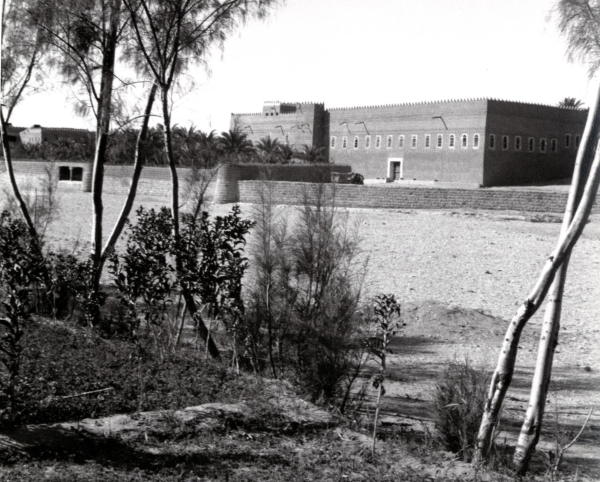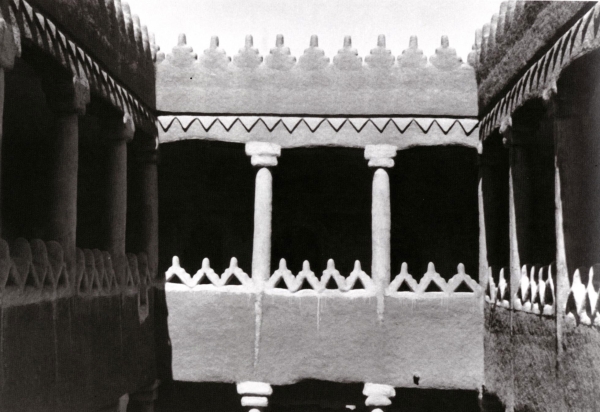

King Abdulaziz Palace in Wadi Hanifa, or Badi'ah Palace is one of the historic royal palaces built by virtue of an order of the Founder King Abdulaziz Bin Abdulrahman Al Saud, to be the seat of royal hospitality and to hold private meetings. The Palace is located in Riyadh, the capital city of the Kingdom of Saudi Arabia.
Location of Badi'ah Palace
In 1935, King Abdulaziz issued an order to build Badi'ah Palace, and the site was determined to be on the western bank of Wadi Hanifa, which is one of the oldest human settlements, between Shoaib Umm Qasr in the north, and Shoaib Ghuthwana in the south. The master builder, Master Hamad bin Qabaa, undertook the construction of the Palace.
Badi'ah Palace during the Reign of King Abdulaziz
Until the royal al-Murabba Palace was built, Badi'ah Palace remained the main seat of hospitality for the visitors of the Founder King Abdulaziz, as the King used to stay there with his guests until he performed Maghrib prayer, and then he would return to Riyadh.
Before the Palace became a tourist attraction in Riyadh Province, al-Batin police took the northern part of the Palace as their headquarters in 1954, while the Saudi Al-Batin School settled in the southern part of it.
The Architectural Style of Badi'ah Palace
Badi'ah Palace was built according to the Najdi architectural style adopted in the old mud buildings. Small white trimmed stones were used in building the foundations of the external walls, which is the method of stone courses that enables the construction of the Palace walls with regular geometric straightness. The building foundations are between 80 and 120 cm deep and 60 cm wide.
Because the outer walls are built of stone and provide the necessary protection from water and moisture for the inner parts of the palace, and due to the abundance of high-quality clay in Wadi Hanifa, the foundations of the internal walls were built with thick clay courses. At the same time, mud bricks were used to design the external and internal terraces.
The Palace walls are covered with adobe, a plastering material consisting of mud bricks mixed with straw, and covered with a thin layer of white plaster.
King Abdulaziz Palace in Wadi Hanifa contains a mosque built in the same architectural style adopted in the Palace. The mosque is intended for the residents and guests of the Palace.
Related quizzes
Related articles

